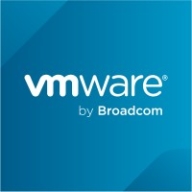

N2W and VMware Live Recovery are competing products in the cloud backup and disaster recovery category. N2W leads in pricing and support, while VMware Live Recovery is favored for its advanced capabilities.
Features: N2W offers efficient AWS backup, storage efficiency, and robust data protection. VMware Live Recovery provides seamless integration, advanced disaster recovery options, and a comprehensive feature set, catering to users needing sophisticated functionality.
Room for Improvement: N2W could enhance integration features, expand its disaster recovery options, and streamline support for complex deployments. VMware Live Recovery might improve user interface simplicity, reduce setup complexity, and offer more flexible pricing models to attract smaller businesses.
Ease of Deployment and Customer Service: VMware Live Recovery presents a straightforward deployment model with wide integration capabilities and reliable customer service. N2W offers a user-friendly deployment, though adjustments may be necessary for intricate setups. Both products provide strong support, but VMware Live Recovery excels in service integration.
Pricing and ROI: N2W is noted for competitive pricing and favorable ROI for small to medium-sized businesses. VMware Live Recovery has higher initial costs but offers substantial ROI through its rich functionality, appealing to enterprises prioritizing comprehensive recovery features.
They are knowledgeable.
Our team has dedicated personnel for support who engage with the supporting teams.
The technical support from VMware is very good and operates based on a service level.
For our test labs, dev labs, and production, it is very stable.
Adding an 'auto-delete after X days' option to manual backups, similar to scheduled policies, would be a fantastic addition for cost management and general housekeeping.
Improved disaster recovery options and expanded multicloud support are two areas where N2WS has already made significant advancements in the latest version.
I would like to see native support for more AWS services beyond EC2 and EBS, such as full coverage of RDS, DynamoDB, and Redshift.
It's important for the cost to be justified based on the features used in production.
I would like to see improved integration services with other solutions, such as SIEM management or security monitoring.
They follow their SOP, but they initially engage very low-level personnel who are not able to answer or resolve the issue, so they escalate or take a very long time to resolve the issue.
Pricing can increase as backup volumes grow, so it is important to balance the level of protection with cost-optimization strategies such as tiering snapshots to S3 or Glacier.
While N2W is a paid product, the cost is easily justified by the significant reduction in engineering hours spent on managing and troubleshooting custom backup scripts.
I believe N2WS offers a highly competitive pricing model, delivering excellent value.
Previously, when acquiring a license for Ethiopian drug supply chains, the price was significantly high, especially after Broadcom joined VMware.
For cloud-based solutions, the cost seems quite pricey, so we stick to on-premises deployment.
We mostly prefer to recommend this to customers due to ease of use, abundant features, and support.
Lifecycle management and automated transitions to lower-cost storage tiers have been instrumental in optimizing costs while meeting compliance and retention requirements.
We had a ransomware event in 2023, and we were able to recover every machine with minimal effort.
The ability to define backup schedules, retention periods, and disaster recovery policies and have them apply automatically based on resource tags scales perfectly with our environment and enforces a consistent data protection strategy across the organization.
It is used for data replication between data centers and allows for quick response in times of failure, ensuring data availability.
If I talk about vCenter and the auto failover of the VMs, such as live migration, that is a very cool feature that we require in our environment because we have different data centers, and if some of the servers fail, they automatically failover and move the VM from one side to another.
The capability and the functionality of the features are very helpful for us.
| Product | Market Share (%) |
|---|---|
| VMware Live Recovery | 7.2% |
| N2W | 0.9% |
| Other | 91.9% |


| Company Size | Count |
|---|---|
| Small Business | 7 |
| Midsize Enterprise | 3 |
| Large Enterprise | 7 |
| Company Size | Count |
|---|---|
| Small Business | 36 |
| Midsize Enterprise | 13 |
| Large Enterprise | 39 |
N2W provides a cloud-native platform for AWS and Azure environments, delivering rapid and secure backup and recovery. With its simplicity and efficiency, N2W addresses modern IT needs for managing diverse workloads.
N2W empowers IT teams with a platform built for real-world AWS and Azure demands. It allows effortless scaling, managing workloads ranging from a single app to thousands. Offering policy-based backups, it ensures rapid recovery, achieving operations under 60 seconds. Its features include ransomware protection, smart data management, seamless low-cost archival, and comprehensive reporting. Trusted by over 1,000 diverse organizations, N2W simplifies protection and reduces complexity.
What features make N2W stand out?
What benefits and ROI make N2W attractive?
N2W serves a range of industries by backing up EC2 instances, RDS, virtual machines, and applications like SQL. It supports disaster recovery through automated backup scheduling and integrates cloud repositories for added security. Often used with Veeam, N2W provides an offsite copy for redundancy.
We monitor all Disaster Recovery (DR) Software reviews to prevent fraudulent reviews and keep review quality high. We do not post reviews by company employees or direct competitors. We validate each review for authenticity via cross-reference with LinkedIn, and personal follow-up with the reviewer when necessary.